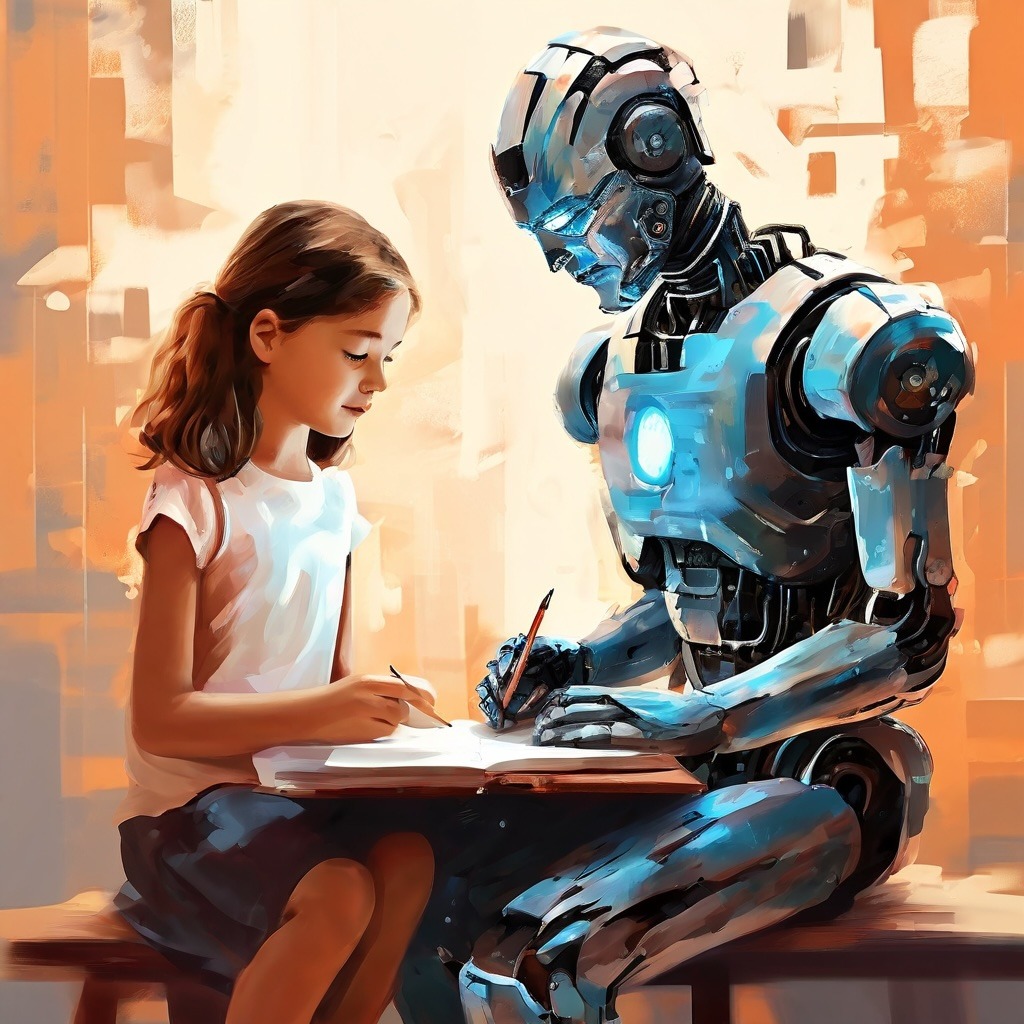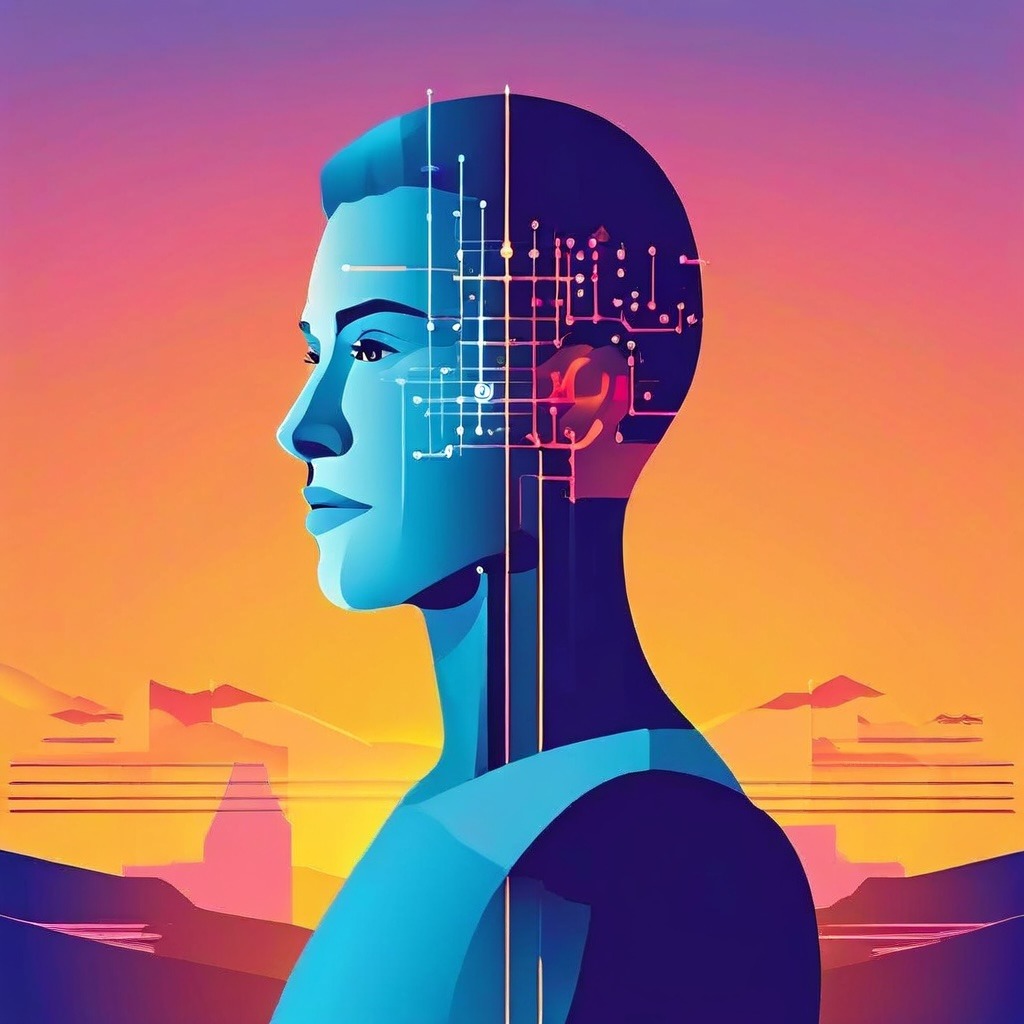How AI Transforms Learning
Personalized Learning Paths (PLPs) are an innovative approach in education that tailors learning experiences to meet the individual needs, skills, and interests of each student.
- AI Power: AI algorithms can analyze student data (strengths, weaknesses, interests, learning styles) to create individualized learning plans and recommend resources tailored to each student.
- Teacher Impact: Enables teachers to shift towards a facilitator role, providing targeted support where most needed and having more flexibility to focus on individual needs.
- Intelligent Assessment: AI algorithms go beyond traditional tests to analyze student interactions within learning platforms, their written work, and even project-based creations. This builds a comprehensive picture of their strengths, weaknesses, and knowledge gaps.
- Adaptive Pathways: Rather than a one-size-fits-all curriculum, AI-powered systems tailor learning paths. They might suggest different resources (videos, text, simulations), adjust difficulty levels, or focus on areas needing reinforcement.
- Recommendation Engines: Like suggesting shows you might enjoy, AI can curate educational content aligned with a student’s interests, preferred learning styles, and goals.
Benefits for Teachers
- From Instructor to Facilitator: Teachers shift from delivering content to guiding students on their unique journeys. It allows time for targeted help, clarifying complex concepts, and fostering higher-order thinking.
- Real-Time Understanding: AI dashboards give teachers valuable insights into each student’s progress. This allows them to identify students needing extra support or those ready for enrichment beyond the standard curriculum.
- Data-Driven Differentiation: Teachers can design more easily individualized or small group activities, addressing specific skill needs across the classroom while maintaining a cohesive learning experience.
Example
A math class uses an AI-powered platform. The AI notices a student excels at geometry but struggles with algebraic expressions. It recommends additional practice problems, interactive tutorials, and even short videos relating algebra to real-world applications, specifically tailored to the student’s interests in engineering.
Considerations
- Teacher Expertise is Essential: AI is a powerful tool, but teachers still provide the context, motivation, and human connection that makes learning meaningful.
- Data Quality: The effectiveness of personalized paths relies on accurate and diverse data input for the AI to analyze.
- Addressing Equity: AI should be used to close achievement gaps, not exacerbate them. Careful design and implementation are crucial to ensure all students benefit from personalization.
AI-powered personalized learning paths can change a student’s educational journey and empower teachers
Imagine Sarah, a student who generally does well in school but finds history a tad dry. Lectures about dates and battles blur together, and she struggles to connect them to a bigger picture. Her teacher, Ms. Hernandez, knows Sarah is capable, but also senses her lack of enthusiasm.
- The AI Advantage: The school uses an AI-powered learning platform. Usually, Sarah would follow the standard curriculum path, but the AI is subtly working in the background. It tracks how she interacts with the material – the resources she opens, how much time she spends, and her performance on quizzes and activities.
- Discovering a New World: Unbeknownst to Sarah, the AI detects a spark when she works on a project analyzing historical documents. It also spots her struggling with timelines and connections between major events. A shift happens – the platform begins suggesting alternative resources. Articles with gripping first-person accounts, interactive maps that visualize events as they unfold, and even simulations where Sarah gets to make historical decisions herself.
- A Transformation for Teacher and Student: Sarah becomes more captivated. History develops into a story, not just a set of facts. Meanwhile, Ms. Hernandez has a dashboard highlighting Sarah’s change in engagement. It also pinpoints specific areas where traditional teaching methods weren’t quite clicking. With this information, Ms. Hernandez guides Sarah towards projects that leverage her newfound interest, while dedicating some individual tutoring time to address Sarah’s difficulties with timelines, helping her grasp how events connect.
- Empowering the Educator: Ms. Hernandez sees similar insights for all her students. She is able to spot emerging patterns early on. This frees her from needing to be the sole source of knowledge, instead becoming a master facilitator. She groups students based on specific areas of interest or need, orchestrating enriching activities while the AI personalizes the day-to-day learning path for each student.
Key Takeaways
- AI unlocks a student’s hidden potential by responding to their unique ways of learning.
- Teachers are transformed from content deliverers to mentors, providing targeted guidance where students need it most.
- Personalized learning isn’t about isolation; it creates space for teachers to foster collaboration and address deeper conceptual understanding in a way that wasn’t possible before.
Practical steps for bringing transformative learning to life within a classroom
Starting Small, Scaling Up
- Pilot Project: Begin by selecting a specific subject area or unit where personalization would be most beneficial. This allows you to focus, learn, and troubleshoot before a broader rollout.
- Partner with Tech Specialists: Collaborate with your school’s IT or EdTech team to identify and evaluate appropriate AI-powered platforms. They can help with setup, data integration, and training.
- Transparency with Students & Parents: Explain the benefits of personalized learning and how the AI will be used. Addressing potential concerns about privacy and data usage upfront builds trust.
Data-Driven Differentiation
- Utilize Existing Assessments: Start by using data from formative assessments, quizzes, and project work to inform the AI system. This provides a baseline understanding of student strengths and areas for growth.
- Set Clear Learning Goals: Define what students should know and be able to do by the end of the unit or module. This will guide the AI in suggesting appropriate resources and activities.
- Focus on Feedback Loops: Make sure the AI tools provide students with meaningful feedback on their progress and allow you, as the teacher, to see their interactions and responses.
Teacher as Master Guide
- Don’t Abdicate, Facilitate: While the AI personalizes content, your role becomes even more crucial. Monitor individual student dashboards, guide students in reflecting on their progress, and design engaging activities that capitalize on the AI’s work.
- Group Strategically: Use insights from the platform to form flexible small groups for targeted instruction, peer collaboration on specific challenges, or enrichment projects.
- Celebrate Growth, Not Just Grades: Help students understand that personalization is aimed at individual growth and mastery, even if it means different pathways for different learners.
Additional Tips
- Student Input: Involve students in setting learning goals and occasionally choosing resources that match their interests, fostering ownership of their learning paths.
- The Human Touch: Make sure to schedule regular one-on-one or small group check-ins with students to provide guidance, address potential frustrations, and maintain the personal connection that is essential for learning.
- Iterative Progress: Regularly evaluate the effectiveness of the AI tools and make adjustments as needed. Share your experience and best practices with your fellow teachers.
Remember: Personalized learning is a dynamic process. Be patient, be willing to experiment, and see yourself as a partner with the AI in empowering your students to reach their full potential!
Examples of AI platforms or resources that facilitate personalized learning
Comprehensive Learning Platforms
- Knewton Alta: An adaptive learning platform that spans a wide array of subjects like math, science, and social studies. It analyzes student performance data to create tailored learning paths and provide real-time recommendations. (https://www.knewton.com/)
- DreamBox Learning: Focuses on math, offering adaptive K-8 lessons. Students learn through engaging interactive experiences and AI adjusts content difficulty based on their progress. (https://www.dreambox.com/)
- Carnegie Learning’s MATHia: Targets middle and high school math. Features an AI tutor that provides step-by-step guidance and adjusts learning based on student understanding. (https://www.carnegielearning.com/)
Specialized Focus Areas
- NoRedInk: Adaptive platform for improving students’ grammar and writing skills. Offers personalized practice activities and feedback on common errors. (https://www.noredink.com/)
- Quizlet: A versatile platform where teachers and students can create AI-powered study sets, flashcards, and practice quizzes. Features a “Learn” mode that presents materials adaptively, focusing on difficult concepts for each learner. ([invalid URL removed])
- Actively Learn: Enrichment focused on reading comprehension, particularly for social studies and science. AI offers dynamic question sets, targeted vocabulary support, and real-time feedback. (https://www.activelylearn.com/)
Teacher-Focused Tools
- BetterLesson: This platform offers ready-made lessons and materials with AI features that help personalize them for your students. It analyzes data points and suggests adaptations or extra supports. (https://betterlesson.com/)
- Classkick: Allows teachers to create interactive assignments and track student progress in real-time. AI can highlight who might need help or who is ready for a challenge, making differentiation easier. (https://classkick.com/)
Important Notes
- Availability and Cost: Some resources may require school or district subscriptions. Always check the pricing and licensing model before introducing a new platform.
- Integration: Ensure the platform you choose aligns with your existing learning management system (LMS) and offers smooth data transfer.
- Professional Development: Most platforms offer teacher training and support. Make sure you make the most of this to fully grasp how to leverage the AI features.
Follow our series of blog post with AI in education HERE
Using AI in Education Use Case 2:10 – Intelligent Tutoring Systems (ITSs)
HERE you find many interesting resources regarding AI in education.





